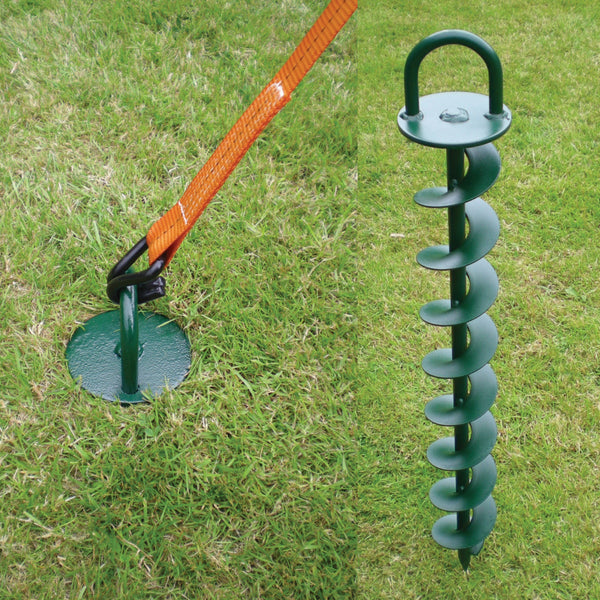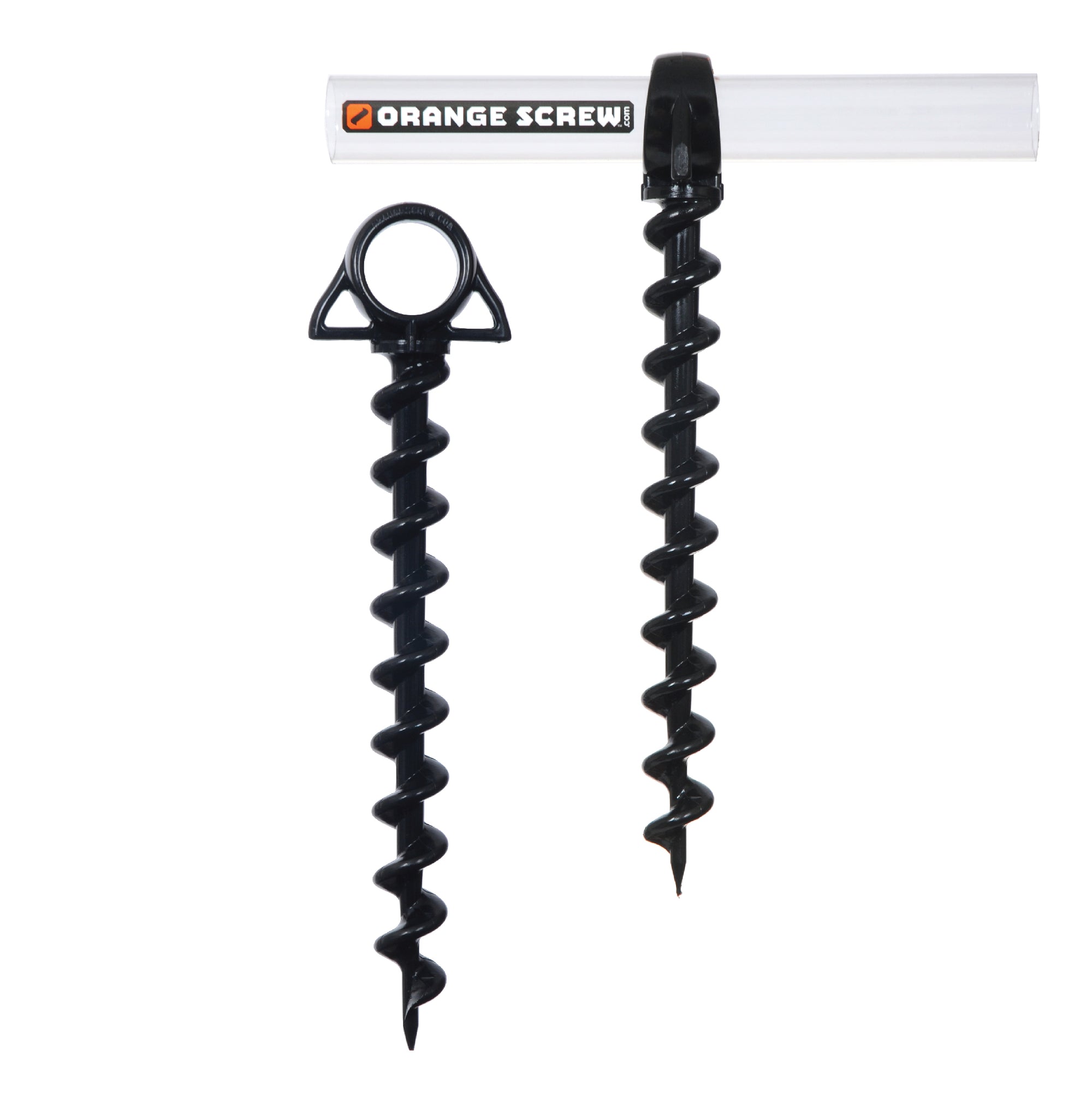Reasons to Choose a High-Quality Ground Anchor for Long-Term Durability
Reasons to Choose a High-Quality Ground Anchor for Long-Term Durability
Blog Article
Explore the Different Kinds Of Ground Support for Your Next Task
From auger anchors, which stand out in diverse soil conditions, to risk supports developed for momentary installments, the alternatives are countless. Furthermore, concrete and screw supports existing special advantages in specific situations, while deadman anchors are customized for applications requiring resistance to lateral pressures.

Auger Anchors
Auger supports are a preferred option in numerous building and landscaping projects as a result of their one-of-a-kind layout and effective securing abilities. These anchors contain a helical screw-like shaft that is driven right into the ground, allowing for a safe and secure hold. The spiral layout promotes easy setup and makes best use of resistance against lateral pressures, making auger anchors specifically effective in applications such as secure fencing, short-lived structures, and disintegration control.
The installation process of auger supports is fairly simple. Auger anchors can be conveniently gotten rid of and recycled, which adds to their cost-effectiveness and sustainability.
Among the considerable benefits of auger anchors is their capability to distribute loads evenly throughout the surrounding soil, lowering the threat of dirt disturbance and lessening ecological influence. Additionally, they are less at risk to loosening up or heaving in time compared to standard anchoring techniques. Consequently, auger supports are an excellent option for jobs needing resilient and reputable anchoring solutions.

Stake Anchors
When it comes to safeguarding structures in a range of exterior applications, risk anchors supply a reliable and simple remedy. These supports are typically constructed from long lasting products such as steel or light weight aluminum, developed to stand up to environmental tensions while supplying ideal stability. Their simple style permits quick installation, making them a suitable option for long-term or short-term anchoring needs.
Stake anchors are specifically helpful in securing outdoors tents, canopies, and various other light-weight structures versus wind and climate. They operate by being driven right into the ground at an angle, producing a strong hold that withstands pull-out pressures - Ground Anchor. The performance of stake supports depends on numerous factors, consisting of soil type, dampness content, and the angle of installment
For included safety, lots of risk supports feature attachment points for bands or ropes, enabling for stress changes as required. In applications such as landscape design or building and construction, they can successfully stabilize tools or structures on unequal terrain. Overall, risk supports supply a economical and flexible remedy for protecting different exterior installments, making them a preferred choice for professionals and do it yourself enthusiasts alike.
Concrete Anchors
Concrete anchors supply a durable service for protecting frameworks to concrete surface areas, making sure security and safety in various applications. These anchors are important for projects ranging from residential constructions to large commercial setups. They come in various types, including development supports, sticky supports, and undercut anchors, each created for specific lots needs and ecological conditions.
Expansion supports count on mechanical mechanisms to grasp the concrete when mounted. They are excellent for tool to heavy-duty applications. Glue anchors utilize high-strength epoxy or material to bond the anchor to the concrete, offering remarkable load-bearing capacities, specifically in broken concrete circumstances. Undercut anchors create a distinct form within the concrete, providing outstanding holding power, specifically in applications where tensile loads prevail.
Choosing the suitable concrete support entails considering aspects such my explanation as the weight of the lots, the problem of the concrete, and ecological conditions. Proper setup techniques are essential to ensure optimum performance and dependability. When performed correctly, concrete supports dramatically boost the structural honesty of various projects, making them essential in modern-day building techniques. Understanding the particular needs of your task will help in selecting the best kind of concrete support for the job.
Screw Anchors

Screw supports are a flexible attaching solution that can be effectively employed in a selection of applications where standard concrete supports might not be sufficient. These supports include a helical style that enables them to be conveniently driven into the ground, making them ideal for use in dirt and other substratums. Their unique framework supplies exceptional holding power and resistance to pull-out forces, making them appropriate for numerous tasks, from landscaping to architectural support.
One of the primary benefits of screw supports is their simplicity of installation. They need marginal devices and can typically be installed without the need for excavation, which conserves both time and labor expenses. Additionally, screw anchors can be gotten rid of and recycled, offering a sustainable service for short-lived applications.
Screw anchors are especially advantageous in areas where soil problems additional hints are testing, such as sandy or loosened dirts. Their capacity to be mounted at differing depths permits personalization based upon details project demands. On the whole, screw anchors provide a trusted and reliable securing method, making them an excellent option for specialists and designers seeking effective remedies for their tasks.
Deadman Anchors
Deadman anchors act as a durable option for stabilizing structures in tough problems, especially where standard securing approaches might fail. These supports consist of huge, hefty things hidden underground, which produce resistance against lateral pressures. The layout generally entails a horizontal part, such as a block of concrete or a metal plate, hidden in the dirt, to which wires or straps are connected.
The effectiveness of deadman supports lies in their capability to disperse loads over a bigger area, decreasing the threat of failing in unstable soil conditions. They are particularly advantageous in applications such as retaining wall surfaces, short-term frameworks, and slope stablizing, where dirt activity can jeopardize the honesty of the framework.
Installation of deadman anchors calls for mindful preparation to guarantee they are placed at the appropriate deepness and orientation, optimizing their load-bearing ability. While they may need more labor and material than lightweight anchors, their reliability in negative conditions makes them important for long-term tasks. Deadman supports are flexible and can be adjusted to different applications, making them a go-to choice for engineers facing distinct challenges in their jobs.
Final Thought
In recap, choosing the suitable sort of ground anchor Visit Your URL is important for making sure security and safety in different jobs. Auger supports master diverse dirt conditions, while risk supports suit short-term applications. For concrete surfaces, development and glue supports offer reputable choices, and screw anchors offer versatility in challenging surfaces. Deadman anchors are specifically efficient in standing up to side forces for retaining wall surfaces. Cautious factor to consider of these choices will certainly improve task results and structural integrity.
In addition, concrete and screw supports present special benefits in certain circumstances, while deadman anchors are tailored for applications requiring resistance to lateral pressures - Ground Anchor.Auger supports are a preferred selection in various building and construction and landscape design tasks due to their one-of-a-kind layout and effective anchoring abilities. They come in different kinds, including development anchors, adhesive anchors, and undercut supports, each designed for specific load requirements and environmental problems
Glue supports use high-strength epoxy or resin to bond the support to the concrete, using remarkable load-bearing abilities, specifically in cracked concrete circumstances. On the whole, screw anchors provide a reputable and effective securing approach, making them an outstanding selection for designers and service providers looking for effective solutions for their tasks.
Report this page